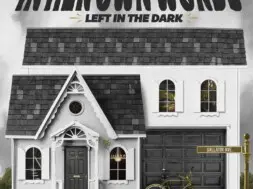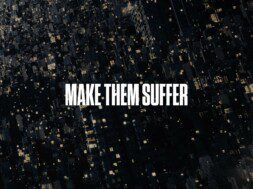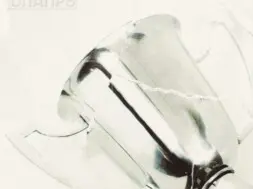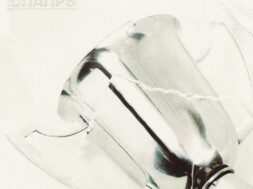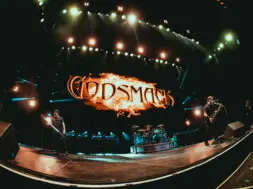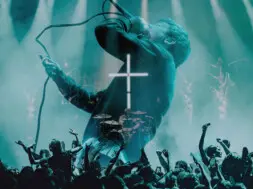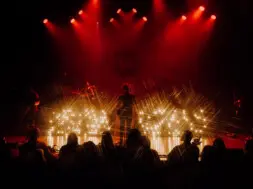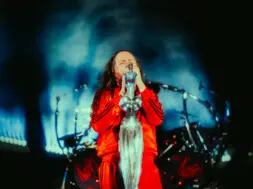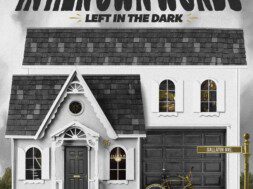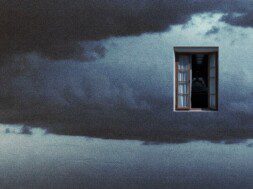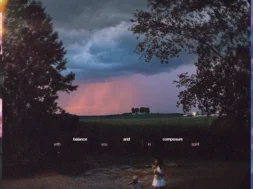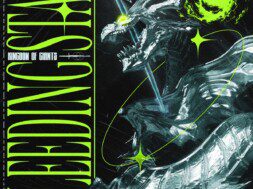 8
8 Constantly reinventing themselves and subverting expectations, The Devil Wears Prada has grown significantly in their 17-year existence. Originally a Myspacecore starter pack band with song titles like “Dogs Can Grow Beards All Over”, they’ve come a long way from their roots, maturing into one of the most artistic-minded and serious acts in the genre. Their growth was documented perfectly in their 2019 record ‘The Act’, a dark and adventurous album that dives headfirst into mental health issues and self-reflection. It was easily their most mature album to date, complimented by jarring and chaotic breakdowns and brooding ballads, ‘The Act’ felt uneasy in its harsh, yet melancholy state. While not the band’s best effort, it was their most exciting, as you genuinely had no idea what what to expect with each track that passed. However, this experiment was met with a mixed response, and ultimately left many of their long-time fans disappointed and overall was not very accessible. The band then released ‘ZII’ two years later, a fun, heavy sequel to their beloved ‘Zombie’ EP from 2010. The EP harkened back to the band’s roots and was well-received and brought the band back into the mainstream metalcore spotlight. Following up ‘ZII”, ‘Color Decay’ has the opposite problem. While a good album with plenty of memorable hooks and great songs, it feels safe. It’s the safest possible album the band could have made, for better or for worse. It’s TDWP’s most accessible album to date, packed full of clean choruses and genre tropes.
Being the most memorable and catchiest the band has released to date, these clean choruses are ‘Color Decay’s biggest strength but also its biggest weakness, as the record is over-reliant on these catchy clean choruses, making appearances in literally every single track on the album. At times, they don’t even fit the song and feel copy-and-pasted from each other, leaving much of the record to feel blended in the listener’s memory by its end. The album’s heavier moments feel ripped straight out of the ‘ZII’ EP, which while this is a good thing and they are great, it is also the safest decision they could have made in this scenario. However, what truly makes this album so easily accessible is the sheer amount of ballads on its tracklist. Out of ‘Color Decay’s 12 tracks, 5 of them are ballads, 3 of which being placed in its second half. Now normally, having this many ballads on a metalcore album would seem like the opposite of a safe decision, hell, ’The Act’ had four. But, for all of its misgivings, the emotional, explosive ballad “Chemical” was the biggest takeaway from ‘The Act’. The song quickly rose to the top of the band’s streaming numbers, becoming one of their most successful and beloved tracks to date, despite being one of the softest of their career. Notably, the ballads on ‘Color Decay’ feel like lesser imitations of “Chemical”, being eerily similar in lyrical content and structure. While enjoyable songs, these ballads do feel like the band chasing the lightning in the battle they found in “Chemical”, and only further support the assertion that ‘Color Decay’ is the band’s safest album.
However, that’s not to say that the album is devoid of experimentation, as the album is full of creative moments and unexpected textures, they’re just served in more digestible packaging and layered in the background as opposed to being front and center. The band took a massive step in the right direction when they brought Jonathan Gering on for synthesizers and programming. Assuming a Jordan Fish-esque role, Gering has handled all of the production duties and become an integral part of the band’s songwriting since joining, leading to some of the most massive and well-written moments of their 17-year career. This is exemplified on the energetic opener “The Exposition”, which rapidly builds momentum through layering and eruptive production and sampling. Many of the album’s songs also end with dramatic and atmospheric programmed interludes, increasing emotional impact and giving the tracks a sense of importance, even if it doesn’t always make sense or flow in the context of the album itself. A great example of this is the final minute of the aptly-named “Time”, which features an arresting orchestral arrangement that capitalizes tremendously on the song’s consistently increasing intensity. The interlude, which can be heard previously as a the background sample in the track, relieves the tension for the next song on the album while adding depth to the lyrics’ poignant realization that time is never on our side. The melodramatic and simplistic “Fire” benefits greatly from Gering’s presence, being primarily led by dynamic samples instrumentally. The structurally unhinged “Hallucinate” is the most experimental track here, all thanks to Gering’s glitched out sampling and chaotic production. It’s the heaviest song on the album and its off-kilter instrumentation and its crushing delivery gives a much needed jolt to the back-end of the album.
The Devil Wears Prada are at their best when they hone in on deeply personal topics with a first-hand perspective, and they do this often on ‘Color Decay’. Gering’s presence has only amplified this on the album, having written the nostalgic alt-rock closer “Cancer” following the passing of one of his heroes. In what is quite possibly the darkest moment on the album, the chorus states “I hope that it’s cancer” with the hope that he died of something other than suicide or addiction. The track is self-aware about how bizarre and jarring of a thought that is to have, but its a thought-provoking and genuinely fascinating listen that is incredibly well-written. “Twenty-Five”, despite being one of the aforementioned tracks that takes a little too much after “Chemical”, is also one of the better cuts off the record for the same reason. Dealing with guilt and grappling with the reality of a crumbling relationship, the song is led by a powerful vocal performance from Hranica, whose every line drips with pain and passion, crafting one of the hardest-hitting moments on the album. Both Hranica and clean vocalist Jeremy Depoyster actually deliver the strongest vocal performances of their careers on ‘Color Decay‘, with the former showing drastic improvement in his screams since their most recent offering. The fast-paced metal rager “Watchtower” similarly touches on deteriorating relationships, but this time steeped with regretfulness and dripping with anger over the circumstances that caused it all to fall apart. Guitarist Kyle Sipress and drummer Giuseppe Capolupo bring the track to life with fiery riffs and fills and an irresistible groove that make it one of the most enjoyable songs released this year in the genre.
Overall, ‘Color Decay’ is a solid release from the metalcore veterans. Even though it is their safest album thus far, it is an enjoyable and engaging record full of passion and moments of lyrical depth. The album’s name is a fitting one, with most of the tracks revolving around relational and emotional decay with matching instrumentation. 17 years into their career, The Devil Wears Prada are showing no signs of slowing down and ‘Color Decay’ is proof of that, and the offering will certainly please most of the band’s long-time fans despite its short-comings.
‘Color Decay‘, The eighth full-length studio album from The Devil Wears Prada, is available now on all streaming platforms via Solid State Records. Watch the official music video for “Broken” below.


